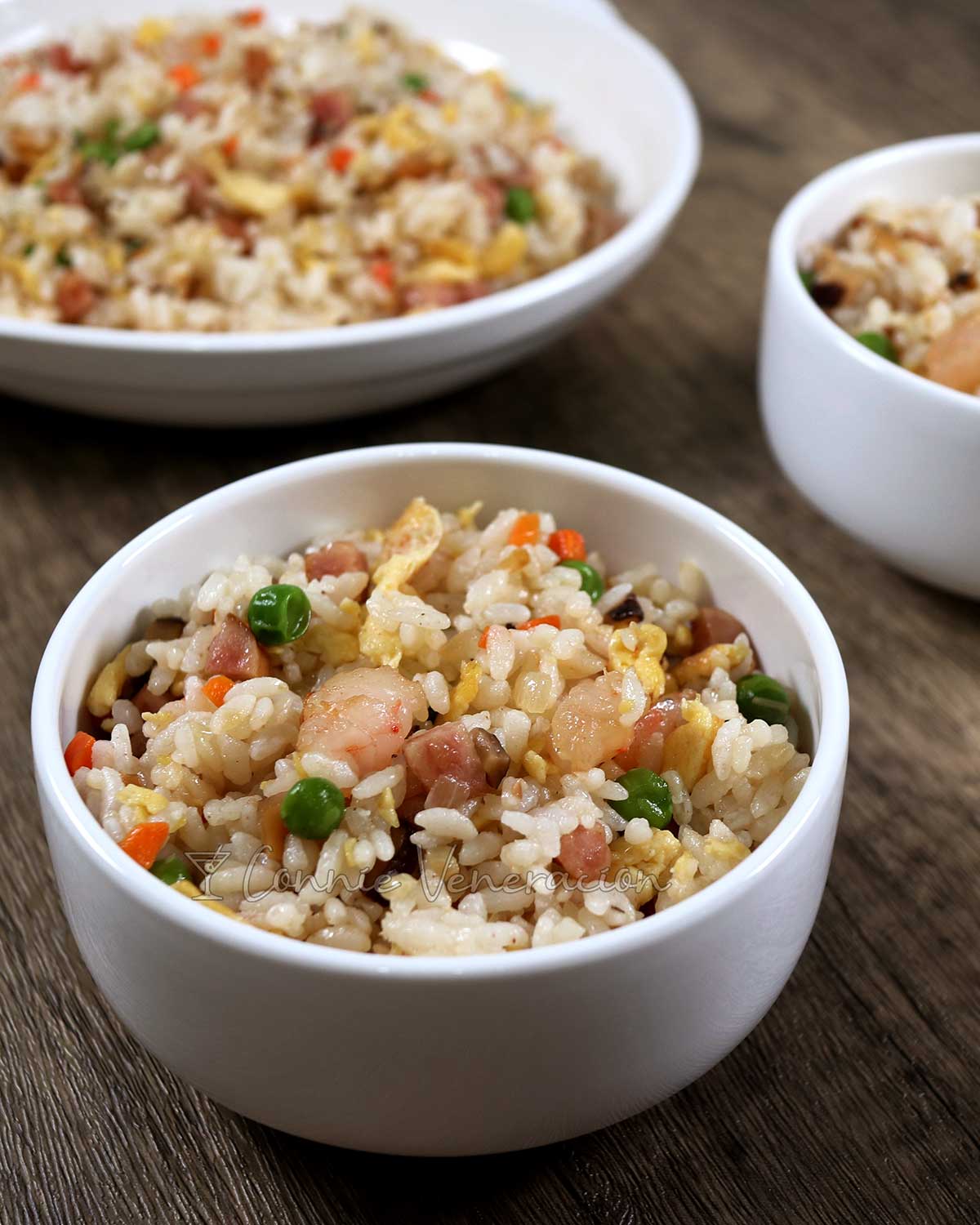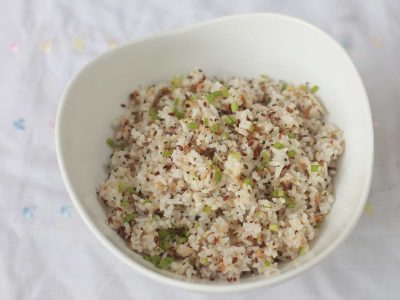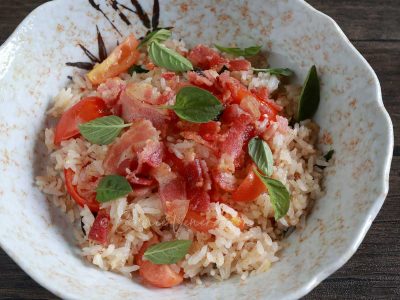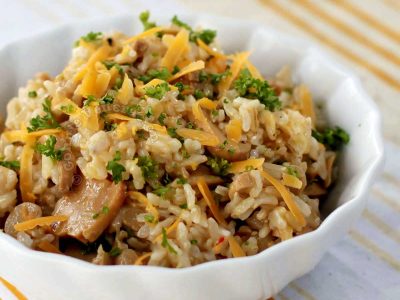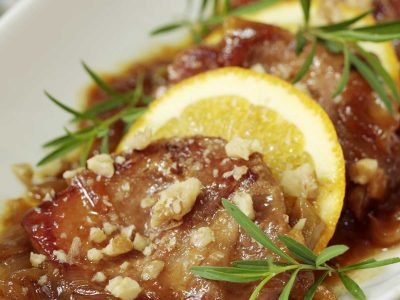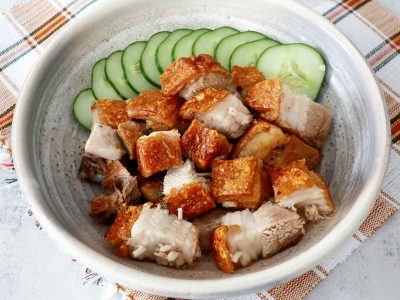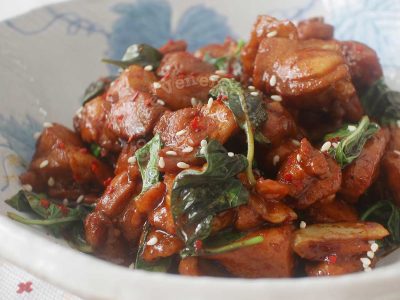There is no strict formula in cooking yang chow fried rice. You can add more meat, seafood and vegetables than what you usually get in restaurants. Be careful though that you don’t use so much non-rice ingredients that the rice grains practically become invisible (what my daughters jokingly call “where is the rice fried rice”).
But what non-rice ingredients should be added for a proper yang chow fried rice? There has to be meat which can be Chinese roast pork (char siu) or lap cheong sausage, or both. If you prefer something other than pork, you may use chopped cooked chicken or duck.
Seafood — shrimps or crabmeat, or both — is also traditional. Some versions include sea cucumber but since it’s not easy to find and preparation can be complicated, it is excluded in this recipe.
The vegetables most commonly added are sweet peas and carrot. Scallions and corn are options too.
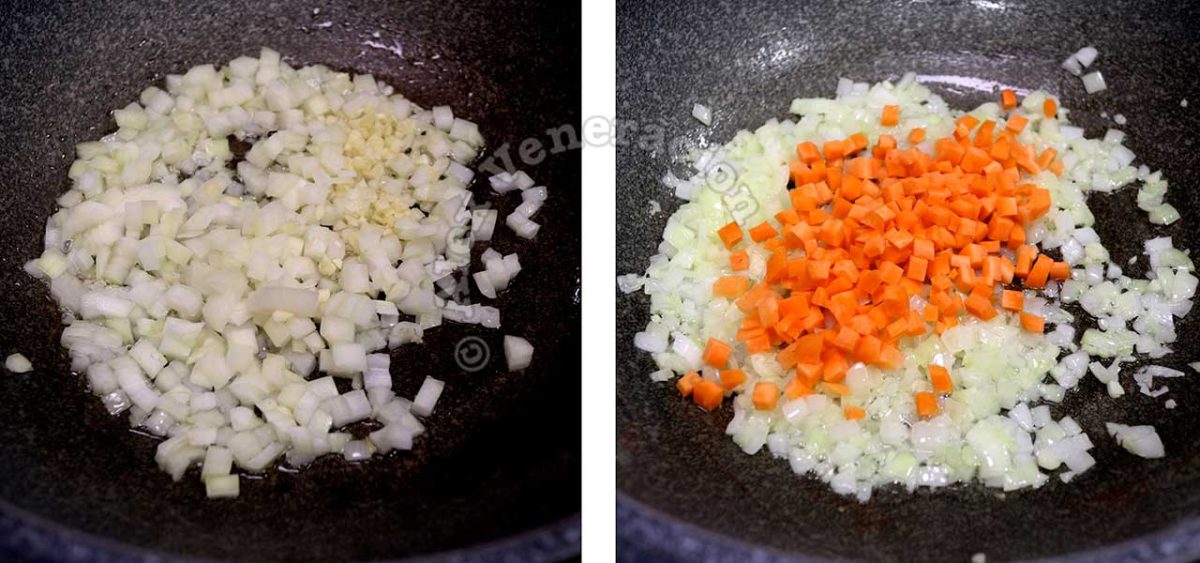
Whatever non-rice ingredients you choose to add, always start cooking yang chow fried rice by creating a flavor base. The most basic is a combination of onion and garlic which are sauteed until aromatic and the onion bits are starting to turn translucent.
In what order the non-rice ingredients should be added to the flavor base depends on which ingredient needs to cook longest. In this case, carrot takes longest to cook so that goes into the wok ahead of the others.
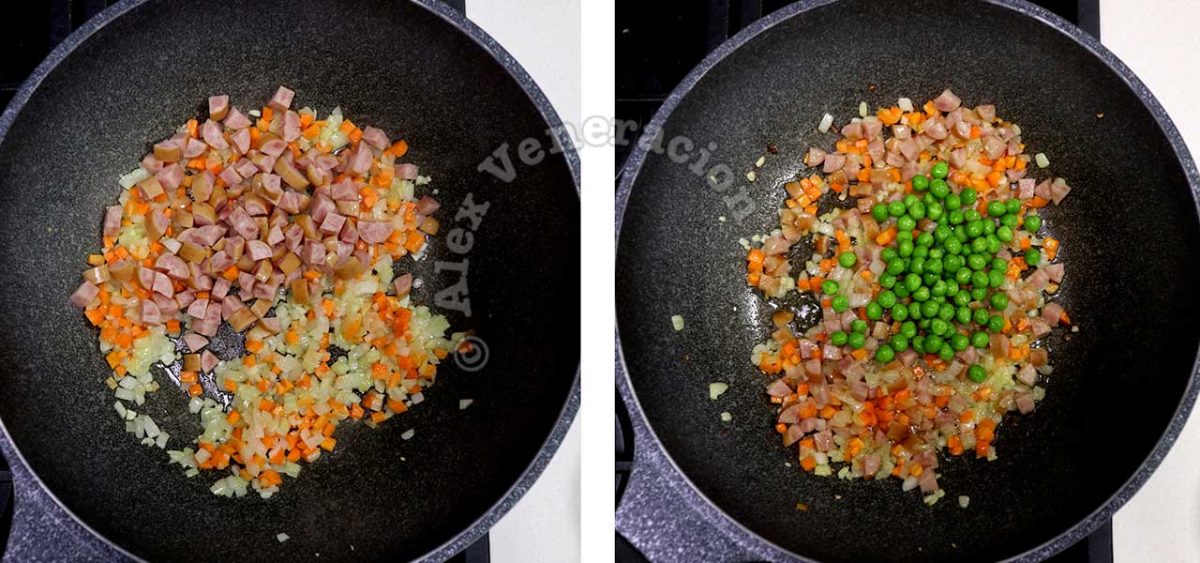
By the time the carrot bits are partially cooked through, I add the Chinese sausage and peas so they get heated through. The sausage renders fat into the mixture to add more flavor.
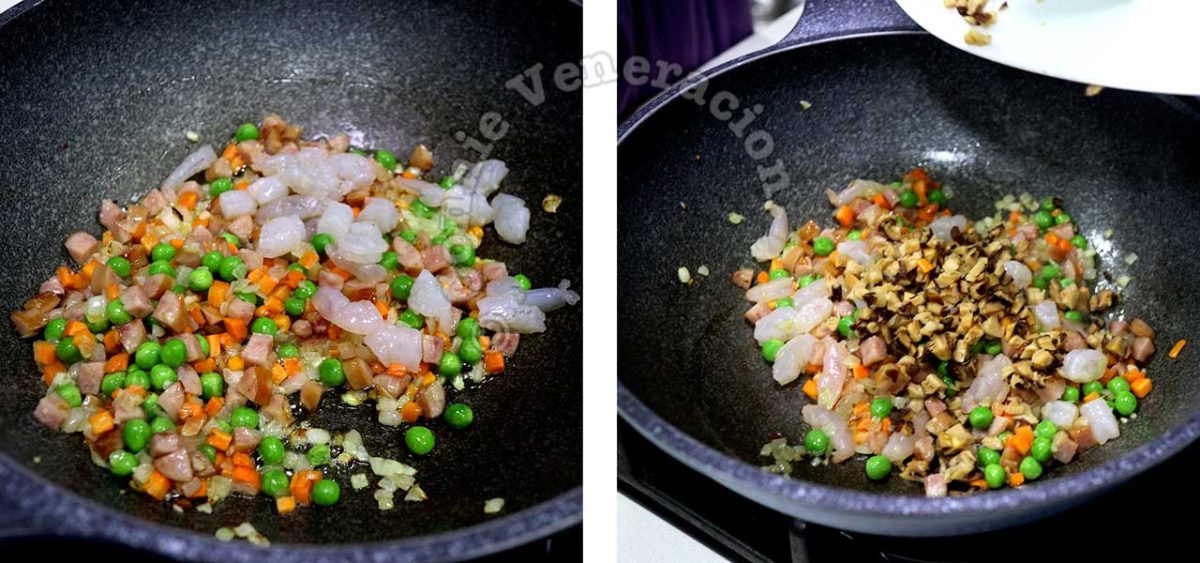
Because I abhor overcooking shrimps, I add them last. The chopped mushrooms go in at the same time. Shrimps need a short cooking time and, as the ingredients get stir fried together, by the time the shrimps and mushrooms are cooked through, the carrot reaches that stage when it is fully cooked but not mushy.
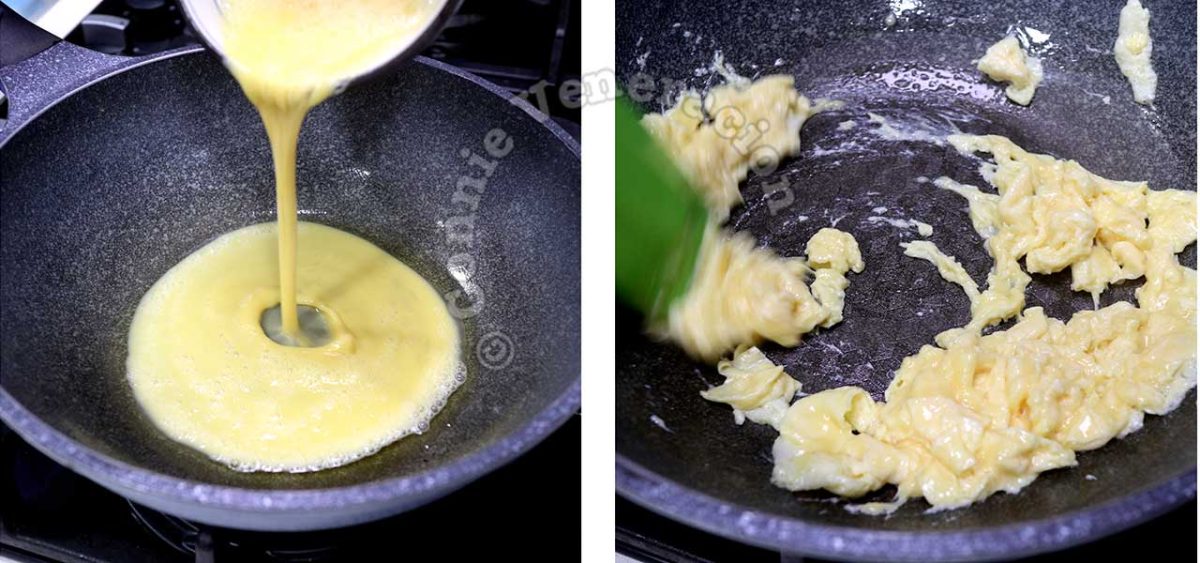
The vegetables, meat and seafood are moved to a bowl, oil is drizzled into the wok and beaten eggs are poured in. The eggs are stirred so that they separate into smaller pieces.
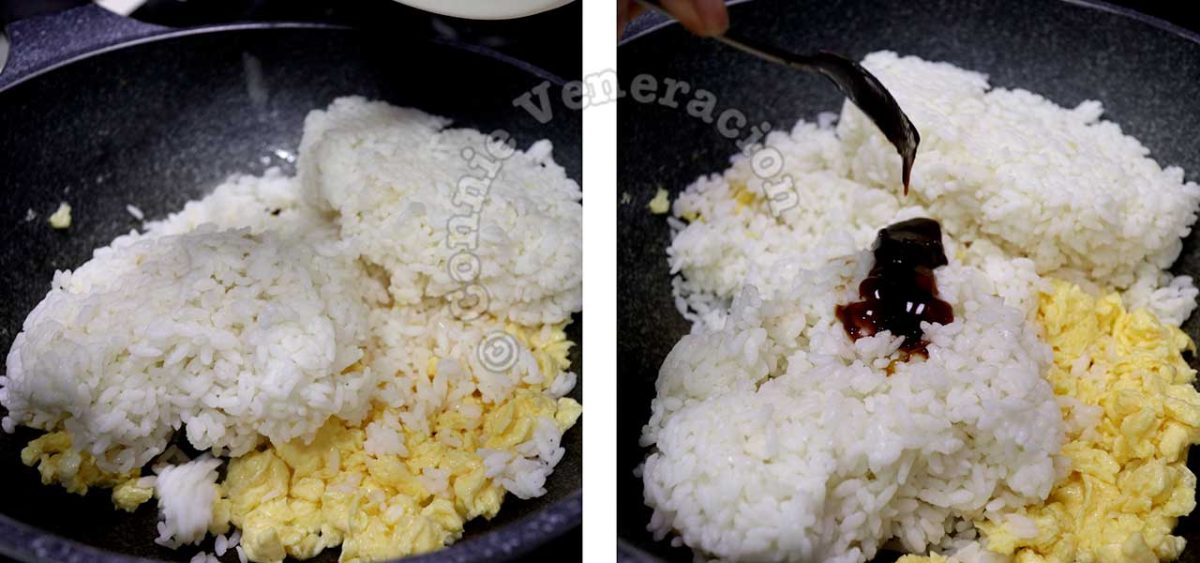
The rice is added and seasoned. Yes, the rice has to be seasoned separately. It’s not a good idea to rely on the flavors of the meat, seafood and vegetables. Those are perfectly seasoned already and you want the rice to be just as tasty. So, season the rice.
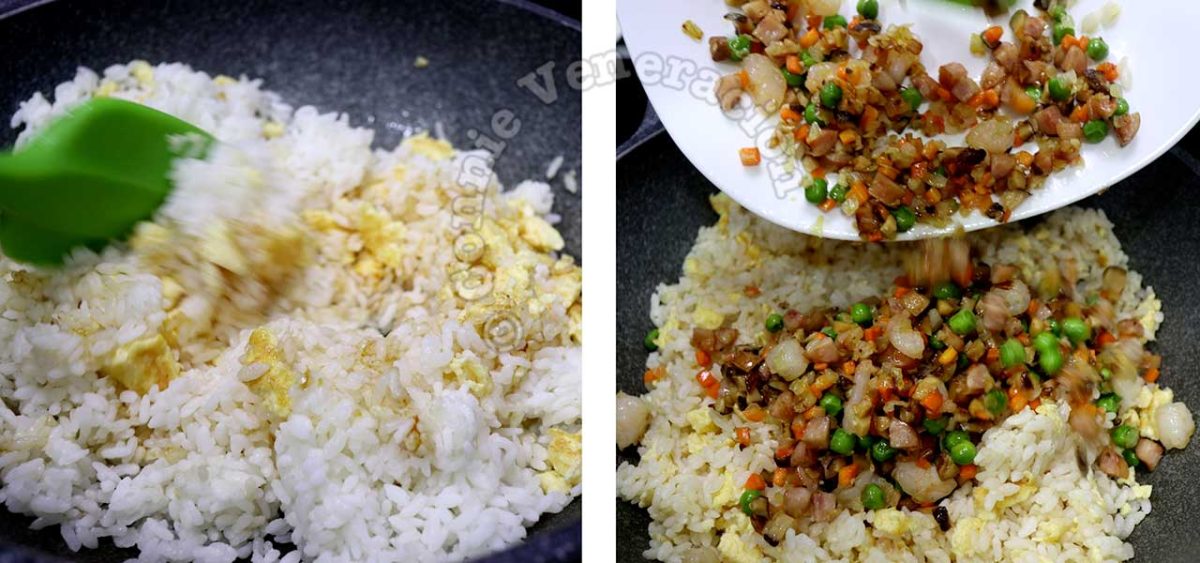
The seasoned rice and eggs are stir fried until the rice is heated through. Toss thoroughly to make sure that the seasoning is distributed. You want it on every grain of rice and not just in patches. Once the rice is hot, the ingredients cooked earlier are added and the stir frying continues for another minute to blend everything together.

Finally, never underestimate the power of sesame seed oil. A little goes a long way, really, but don’t skip it as it provides the perfect finishing touch to yang chow fried rice.
Yangzhou (yang chow) fried rice
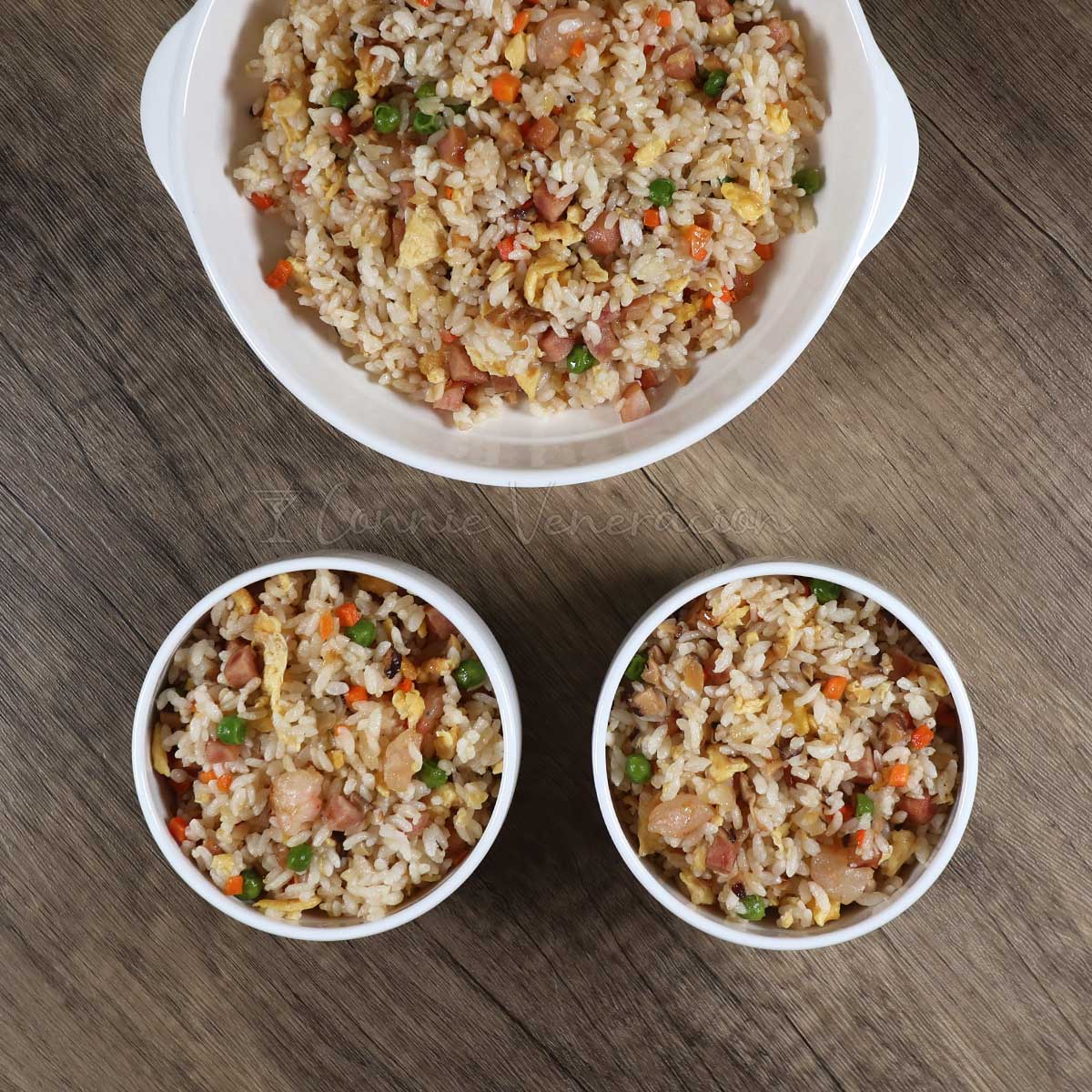
Ingredients
- 2 tablespoons cooking oil divided
- ¼ cup chopped onion
- 1 teaspoon minced garlic
- ¼ cup chopped carrot
- ¼ cup chopped lap cheong sausage
- ¼ cup sweet peas
- ¼ cup chopped shrimps
- ¼ cup chopped mushrooms (shiitake was used here)
- salt
- pepper
- 2 eggs beaten
- 4 cups cooked rice
- 1 tablespoon oyster sauce
- 1 tablespoon hoisin sauce
- ½ teaspoon sesame seed oil
Instructions
- Heat a tablespoon of oil in a wok and cook the onion and garlic for about half a minute.
- Add the carrot and stir fry for another half a minute.
- Next, add the chopped sausage and toss around for a minute.
- Add the peas and toss.
- Add the shrimps and mushrooms, sprinkle in half a teaspoon of salt and a quarter teaspoon of pepper, and stir fry for a minute or until the shrimps are cooked through.
- Scoop out the contents of the wok, transfer to a bowl and keep hot.
- Heat the remaining tablespoon of oil in the wok.
- Pour in the beaten eggs, sprinkle with generous pinches of salt and pepper, and cook, stirring and tossing to break into small pieces, until no longer wet.
- Add the rice to the eggs.
- Drizzle in the oyster sauce and hoisin sauce.
- Stir fry the rice and eggs until the seasonings are evenly distributed and the rice is heated through.
- Add the sausage-shrimp-vegetable mixture to the rice and eggs.
- Stir fry for another minute until everything is hot.
- Off the heat, drizzle in the sesame seed oil and toss the fried rice thoroughly.
- Taste, and add more salt and pepper, if needed, and toss to blend before serving.

